100g
Showing 1501–1550 of 2169 results
-

p-Chloroacetanilide
$161.77 Add to cart View Product Detailsp-Chloroacetanilide
-

p-Dimethoxybenzene
$69.64 Add to cart View Product Detailsp-Dimethoxybenzene
-

p-Hydroxybenzoic Acid Monosodium Salt
$311.67 Add to cart View Product Detailsp-Hydroxybenzoic Acid Monosodium Salt
-

p-Hydroxybenzoic Acid, Reagent
$73.22 Add to cart View Product Detailsp-Hydroxybenzoic Acid, Reagent
-

p-Nitrophenol, Reagent
$150.10 Add to cart View Product Detailsp-Nitrophenol, Reagent
-

p-Nitrophenyl Phosphate Di(Tris) Salt
$1,299.68 Add to cart View Product Detailsp-Nitrophenyl Phosphate Di(Tris) Salt
-

p-Phenylenediamine Dihydrochloride
$195.40 Add to cart View Product Detailsp-Phenylenediamine Dihydrochloride
-

p-tert-Amylphenol
$62.32 Add to cart View Product Detailsp-tert-Amylphenol
-

p-Toluenesulfonic Acid Sodium Salt
$99.46 Add to cart View Product Detailsp-Toluenesulfonic Acid Sodium Salt
-

p-Toluenesulfonic Acid, Monohydrate, Practical
$39.79 Add to cart View Product Detailsp-Toluenesulfonic Acid, Monohydrate, Practical
-

p-Toluenesulfonyl Isocyanate
$39.12 Add to cart View Product Detailsp-Toluenesulfonyl Isocyanate
-

p-Toluidine Hydrochloride
$104.74 Add to cart View Product Detailsp-Toluidine Hydrochloride
-

p-Tolyldiethanolamine
$85.80 Add to cart View Product Detailsp-Tolyldiethanolamine
-

p-Xylene-2-sulfonic Acid, Hydrate
$320.97 Add to cart View Product Detailsp-Xylene-2-sulfonic Acid, Hydrate
-

p-Xylylenediamine
$392.56 Add to cart View Product Detailsp-Xylylenediamine
-

Palladium Chloride, Reagent, ACS
$15,481.68 Add to cart View Product DetailsPalladium Chloride, Reagent, ACS
-

Palmitanilide
$237.38 Add to cart View Product DetailsPalmitanilide
-

Palmitic Anhydride
$461.47 Add to cart View Product DetailsPalmitic Anhydride
-

Pamoic Acid
$175.75 Add to cart View Product DetailsPamoic Acid
-

Panthenol, USP
$206.89 Add to cart View Product DetailsPanthenol, USP
-

Pantoprazole Sodium, USP
$2,697.59 Add to cart View Product DetailsPantoprazole Sodium, USP
-

Papain, Powder, Purified
$173.75 Add to cart View Product DetailsPapain, Powder, Purified
-

Papaya Fruit, Powder
$131.27 Add to cart View Product DetailsPapaya Fruit, Powder
-

para-Toluenesulfonic Acid, Monohydrate, Reagent, ACS
$55.57 Add to cart View Product Detailspara-Toluenesulfonic Acid, Monohydrate, Reagent, ACS
-
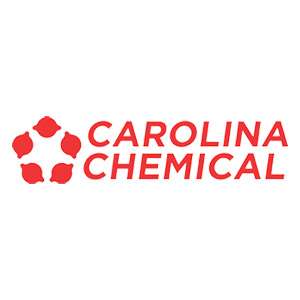
Paraformaldehyde Prills 91-93% – 100G
$13.80 Add to cart View Product DetailsCAS Number 30525-89-4 Molecular Formula HO(CH2O)nH Molecular Weight 30.03 (As Monomer) -

Pararosaniline
$489.38 Add to cart View Product DetailsPararosaniline
-

Pararosaniline Hydrochloride
$199.34 Add to cart View Product DetailsPararosaniline Hydrochloride
-

Patent Blue
$112.36 Add to cart View Product DetailsPatent Blue
-

Patent Blue A
$453.56 Add to cart View Product DetailsPatent Blue A
-
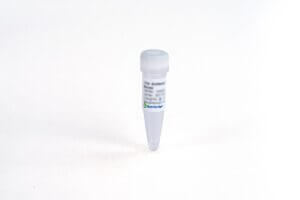
PD-1 (2E5), mAb, Mouse
$261.34 Add to cart View Product DetailsProgrammed Cell Death Protein 1 (PD-1), is cell surface receptor expressing on T cells and pro-B cells. The binding of PD-1 to its two ligands, PD-L1 and PD-L2, could result in down-regulation of the immune system by inhibiting the T-cell activation process. Thus, PD-1 is an important immune checkpoint and a popular target for therapeutic antibodies against many cancers.
-

PD-1 Fc Chimera, Mouse
$172.50 Add to cart View Product DetailsProgrammed cell death protein 1, also known as PD-1 and CD279 (cluster of differentiation 279) or PDCD1, is a protein that in humans is encoded by the PDCD1 gene. PD-1 is a cell surface receptor that belongs to the immunoglobulin superfamily and is expressed on T cells and pro-B cells.PD-1 binds two ligands, PD-L1 and PD-L2. PD-1 and its ligands play an important role in down regulating the immune system by preventing the activation of T-cells, which in turn reduces autoimmunity and promotes self-tolerance. The inhibitory effect of PD-1 is accomplished through a dual mechanism of promoting apoptosis (programmed cell death) in antigen specific T-cells in lymph nodes while simultaneously reducing apoptosis in regulatory T cells (suppressor T cells).
-
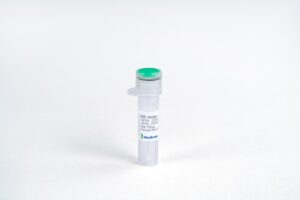
PD-1, His, Human
$172.50 Add to cart View Product DetailsProgrammed death (PD-1) is an immunoinhibitory receptor that belongs to the CD28 family and is expressed on T cells, B cells, monocytes, natural killer cells, and many tumor-infiltrating lymphocytes (TILs); PD-1 is a type I membrane protein of 268 amino acids and which structure includes an extracellular IgV domain followed by a transmembrane region and an intracellular tail. The intracellular tail contains two phosphorylation sites located in an immunoreceptor tyrosine-based inhibitory motif and an immunoreceptor tyrosine-based switch motif, which suggests that PD-1 negatively regulates TCR signals. This is consistent with binding of SHP-1 and SHP-2 phosphatases to the cytoplasmic tail of PD-1 upon ligand binding. It has 2 ligands that have been described PD-L1(B7H1) and PD-L2(B7-DC); PD-1 induction on activated T cells occurs in response to PD-L1 or L2 engagement and limits effector T-cell activity in peripheral organs and tissues during inflammation, thus preventing autoimmunity.Recombinant Human PD-1 produced in HEK293 cells is a polypeptide chain containing 149 amino acids with C-terminal 6×His. A fully biologically active molecule, rhPD-1 has a molecular mass of 30-40 kDa analyzed by reducing SDS-PAGE and is obtained by chromatographic techniques at GenScript.
-
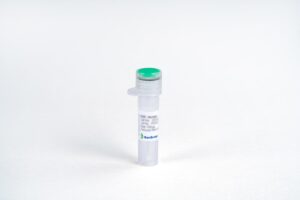
PD-L1, His, Human
$129.38 Add to cart View Product DetailsProgrammed death-ligand 1 (PD-L1) also known as cluster of differentiation 274 (CD274) or B7 homolog 1 (B7-H1), is a protein that in humans is encoded by the CD274 gene. PD-L1 is a 40 kDa type 1 transmembrane protein that has been speculated to play a major role in suppressing the immune system during particular events such as pregnancy, tissue allografts, autoimmune disease and other disease states such as hepatitis. Normally the immune system reacts to foreign antigens where there is some accumulation in the lymph nodes or spleen which triggers a proliferation of antigen-specific CD8+ T cell. The formation of PD-1 receptor / PD-L1 or B7.1 receptor /PD-L1 ligand complex transmits an inhibitory signal which reduces the proliferation of these CD8+ T cells at the lymph nodes and supplementary to that PD-1 is also able to control the accumulation of foreign antigen specific T cells in the lymph nodes through apoptosis which is further mediated by a lower regulation of the gene Bcl-2. PD-L1 binds to its receptor, PD-1, found on activated T cells, B cells, and myeloid cells, to modulate activation or inhibition. Recombinant Human PD-L1(B7-H1) Fc Chimera produced in CHO cells is a polypeptide chain containing 457 amino acids. A fully biologically active molecule, rh PD‑L1(B7-H1) has a molecular mass of 70-72 kDa analyzed by reducing SDS-PAGE and is obtained by chromatographic techniques at GenScript.
-

PD-L2 Fc Chimera, Human
$215.63 Add to cart View Product DetailsPD-L1 and PD-L2 are ligands for PD-1, a costimulatory molecule that plays an inhibitory role in regulating T cell activation in the periphery. PD-L2 also known as PD-L2, B7-DC serves as a negative and a positive regulator of T cell function. The expression and function of PD-L2 are similar to PD-L1. Both PD-L2−PD-1 and PD-L1−PD-1 signals inhibit T cell proliferation by blocking cell cycle progression but not by increasing cell death. PD-L2−PD-1 interactions are able to inhibit TCR-mediated proliferation and cytokine production in the absence of CD28 costimulation. Threshold for T cell activation may be a balance between activating signals, such as those delivered by the engagement of CD28 by B7-1 and B7-2, and inhibitory signals, mediated by engagement of PD-1 by PD-L1 and PD-L2. The structural conservation of B7-like and CD28-like receptors may reflect the distance between T cells and APCs in the immunological synapse. The PD-L−PD-1 pathway may play a key role in the induction and/or maintenance of peripheral tolerance and autoimmune disease. Because PD-L1 and PD-L2 can inhibit effector T cell proliferation and cytokine production, the PD-L−PD-1 pathway may be an attractive therapeutic target. Blocking the PD-1 pathway may enhance anti-tumor immunity, whereas stimulating this pathway may be useful for down-regulating ongoing immune responses in transplant rejection and autoimmune and allergic diseases.
-
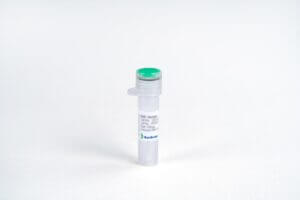
PDGF-BB, Bovine
$521.81 Add to cart View Product DetailsPlatelet-derived growth factor (PDGF) presenting in serum but absent from plasma was first discovered in an animal study by Lynch and co-workers in the late 1980s. It is a disulfide-linked dimer consisting of two peptides-chain A and chain B. PDGF has three subforms: PDGF-AA, PDGF-BB, and PDGF-AB. It is involved in many biological processes, including hyperplasia, embryonic neuron development, chemotaxis, and respiratory tubule epithelial cell development. The function of PDGF is mediated by two receptors (PDGFR-α and PDGFR-β).
-

PDGF-BB, Human
$521.81 Add to cart View Product DetailsPlatelet-derived growth factor (PDGF) presenting in serum but absent from plasma was first discovered in animal study by Lynch and co-workers in the late 1980s. It is a disulfide-linked dimer consisting of two peptides-chain A and chain B. PDGF has three subforms: PDGF-AA, PDGF-BB, PDGF-AB. It is involved in a number of biological processes, including hyperplasia, embryonic neuron development, chemotaxis, and respiratory tubule epithelial cell development. The function of PDGF is mediated by two receptors (PDGFR-α and PDGFR-β).
-

PDGF-BB, Mouse
$521.81 Add to cart View Product DetailsPlatelet-Derived Growth Factor Subunit B (PDGFB) belongs to the PDGF/VEGF growth factor family. Platelet-derived growth factor is a potent mitogen for cells of mesenchymal origin. PDGFB can exist either as a homodimer (PDGF-BB) or as a heterodimer with the platelet-derived growth factor alpha polypeptide (PDGF-AB), where the dimers are connected by disulfide bonds. As growth factor, it plays an essential role in the regulation of embryonic development, cell proliferation, cell migration, survival and chemotaxis. It is required for normal proliferation and recruitment of pericytes and vascular smooth muscle cells in the central nervous system, skin, lung, heart and placenta. PDGFB also plays an important role in wound healing.
-
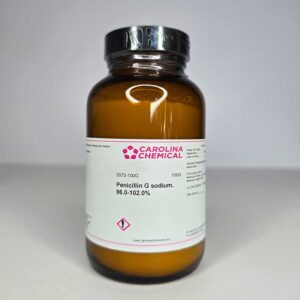
Penicillin G Sodium – 100G
$69.00 Add to cart View Product DetailsCAS Number 69-57-8 Linear Formula C16H17N2NaO4S Molecular Weight 356.37 -

Pentaerythritol tetrakis(3,5-di-tert-butyl-4-hydroxyhydrocinnamate)
$87.54 Add to cart View Product DetailsPentaerythritol tetrakis(3,5-di-tert-butyl-4-hydroxyhydrocinnamate)
-
![Pentaerythritol Tetrakis[3-(3,5-di-tert-butyl-4-hydroxyphenyl)propionate]](https://advatechgroup.com/wp-content/plugins/woocommerce/assets/images/xplaceholder.webp.pagespeed.ic.ANHCL-f_RA.webp)
Pentaerythritol Tetrakis[3-(3,5-di-tert-butyl-4-hydroxyphenyl)propionate]
$55.52 Add to cart View Product DetailsPentaerythritol Tetrakis[3-(3,5-di-tert-butyl-4-hydroxyphenyl)propionate]
-

Pentafluoropropionic Acid
$502.12 Add to cart View Product DetailsPentafluoropropionic Acid
-

Pentoxifylline, BP
$1,100.76 Add to cart View Product DetailsPentoxifylline, BP
-

Peony Root, Powder
$132.73 Add to cart View Product DetailsPeony Root, Powder
-

Pepsin, 1:3,000, Powder
$423.84 Add to cart View Product DetailsPepsin, 1:3,000, Powder
-

Peptone, Beef, Powder
$56.06 Add to cart View Product DetailsPeptone, Beef, Powder
-

Pergolide Mesylate, USP
$50,512.60 Add to cart View Product DetailsPergolide Mesylate, USP
-

Periodic Acid
$86.14 Add to cart View Product DetailsPeriodic Acid
-

Periodic Acid, Reagent
$160.40 Add to cart View Product DetailsPeriodic Acid, Reagent
-

Phenanthrene, Reagent
$129.84 Add to cart View Product DetailsPhenanthrene, Reagent
-
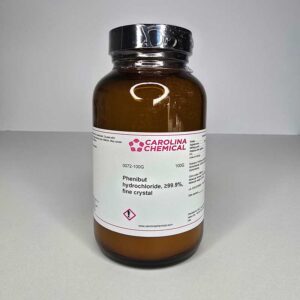
Phenibut Hydrochloride Powder – 100G
$65.00 Add to cart View Product DetailsCAS Number 3060-41-1 Linear Formula C10H14ClNO2 Molecular Weight 215.68 MDL Number MFCD00075860






